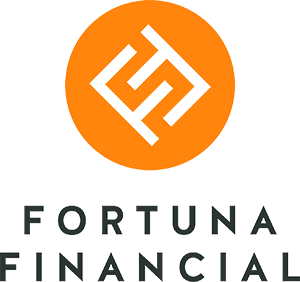What our Clients Say About Us
How much do you know about mortgages?
A dream for most Australians is to own their own home. Not only is there a measure of security in bricks and mortar as an investment, but there’s a sense of stability, of permanency. Then there’s the emotional pull; the joy of raising children and creating memories of family and friends, celebrations and life events. According to the Australian Institute of Health and Welfare, 35% of Australians currently have mortgages over their home.
How much do you really know about mortgages?
Take our quiz and find out!
Q1: How much deposit do you need to avoid lenders mortgage insurance?
- About $250,000.
- 10%.
- 20%
- 5%
- 25%
- Depends on your relationship with your lender.
Q2: What is a mortgage stress test?
- A test to determine your resilience to fluctuations in property values.
- A test lenders use to assess your financial position and the potential impact of interest rate rises.
- A pre-approval medical check-up used to determine life expectancy and calculate the term of the mortgage.
Q3: What is a DTI?
- Date to Invest refers to the date the purchaser takes possession of their new home.
- Delay Transfer Implementation happens when either the vendor or purchaser wishes to delay property settlement.
- Debt to Income is a ratio comparing your level of debt and income.
Q4: When applying for a mortgage, does it matter how many credit cards you have?
- Yes, because lenders may consider the sum of all your credit limits.
- It’s good if you have a lot of cards – it shows lenders trust you.
- No because credit cards are unsecured loans.
Q5: What is a re-draw facility?
- A facility that enables you to increase the loan amount without further application provided you’ve made regular repayments for at least one year.
- A savings facility linked as a sub-account on your loan that helps reduce your interest payments.
- A facility that enables you to make extra loan repayments that you can withdraw as required.
Q6: What is meant by property equity?
- The difference between the property’s purchase price and the price you later sold it for.
- The difference between the property’s market value and the amount owed on the mortgage.
- The value of the fixtures that remain behind if you sold the property, e.g. carpet, light fittings etc.
Q7: What is an interest-only loan?
- A loan where only the interest is repaid to reduce the repayment amount.
- A loan provided by non-bank institutions as they’re not interested in providing savings accounts.
- A way to avoid Lenders Mortgage Insurance as you’re only required to repay the interest.
Q8: When would you use a bridging loan?
- They’re used in conjunction with business loans for buying stock and equipment.
- To help ‘bridge-the-gap’ between pay-days.
- To cover the time between purchasing a new property and selling your existing one.
ANSWERS & CALL TO ACTION
Q1: How much deposit do you need to avoid lenders mortgage insurance?
- About $250,000.
- 10%.
- 20%
- 5%
- 25%
Depends on your relationship with your lender.
Lenders mortgage insurance (LMI) is designed to protect the lender in the event that you lose your job, or for any other reason, are unable to meet your mortgage repayments.
While the amount of deposit needed to avoid LMI may vary between lenders, you should aim to have at least 20% of the property’s value saved.
Generally speaking, the more deposit you have saved, the better, as you also need to cover stamp duty and other costs.
Q2: What is a mortgage stress test?
- A test to determine your resilience to fluctuations in property values.
- A test lenders use to assess your financial position and the potential impact of interest rate rises.
- A pre-approval medical check-up to assess your health to calculate the term of the mortgage.
A mortgage stress test is a test lenders use to assess your financial position. It looks at a number of financial factors, but focusses on your ability to service a loan if interest rates were to rise.
All lenders test against rate rises of a specific percentage based on their own lending criteria, however the Australian Prudential Regulation Authority (APRA) sets a minimum percentage, which, as of 1 November 2021 is 3%.
Q3: What is DTI?
- Date to Invest refers to the date the purchaser takes possession of their new home.
- Delay Transfer Implementation happens when either the vendor or purchaser wishes to delay property settlement.
- Debt to Income is a ratio comparing your level of debt and income.
A DTI ratio is a calculation that looks at all debt such as credit cards, personal loans, investment loans etc. and compares that amount against your overall income.
If you’re thinking of applying for a mortgage, it’s often helpful to work out your own DTI ratio to get an idea of how much you’re likely to be able to borrow.
Many lenders have their own way of calculating your DTI ratio, but you can get a rough figure by adding up all your liabilities (L) and all forms of income (I).
Then calculate: L divided by I.
Generally speaking, if you have a low DTI ratio, a lender is more likely to approve your application as it is considered you have both the income and the ability to support the repayments.
Q4: When applying for a mortgage, does it matter how many credit cards you have?
- Yes, because lenders may consider the sum of all your credit limits.
- It’s good if you have a lot of cards as it shows lenders trust you.
- No, because credit cards are unsecured loans
Lending institutions will include your credit cards when calculating the amount of your debt.
In fact, the number of cards, whether you use them or not, is very important as in many cases, the debt amount considered is not the balance you owe on the cards, but the total of each card’s credit limit – even if you owe nothing on the cards.
Unfair as this may seem, it’s because you could potentially spend up to that amount, thus incurring the debt. It is the lender’s way of protecting itself against you being unable to make future loan repayments.
This is why, when assessing your mortgage application, a lender may suggest you cancel any cards you don’t need or use.
Q5: What is a re-draw facility?
- A facility that enables you to increase the loan amount without further application provided you’ve made regular repayments for at least one year.
- A savings facility linked as a sub-account on your loan that helps reduce your interest payments.
- A facility that enables you to make extra loan repayments that you can withdraw as required.
A redraw facility enables you to make additional payments on your mortgage then, in the case of an unexpected expense, you are able to draw down on that money.
While similar, a savings facility linked as a sub-account to your loan to reduce interest payments is called an offset account. When the interest is calculated on your loan, the loan balance is reduced by the amount you have in the offset account.
Both offset accounts and redraw facilities are a great way to pay off your mortgage sooner.
Q6: What is meant by property equity?
- The difference between the property’s purchase price and the price you later sold it for.
- The difference between the property’s market value and the amount owed on the mortgage.
- The value of the fixtures that remain behind if you sold the property, e.g. carpet, light fittings etc.
The equity in a property is the difference between the market value of the property (what you could reasonably sell it for), and how much is still owing on the mortgage.
For example, if your property has a market value of $650,000 and you owe $225,000 on your mortgage, then the property’s equity is $425,000. In other words, it’s the value of what you actually own in the property.
Q7: What is an interest-only loan?
- A loan where only the interest is repaid to reduce the loan repayments.
- A loan provided by non-bank institutions as they’re not interested in providing savings accounts.
- A way to avoid Lenders Mortgage Insurance as you’re only required to repay the interest.
Interest-only loans enable you to make only interest payments for a set period of say, three years. This is a way of reducing your repayments in the event of an unexpected expense of a period where you find yourself between jobs.
It works like this:
Ordinarily, each time you make a loan repayment, the amount you pay is made up of both capital (the amount borrowed) and interest.
When making interest-only payments, you’re only paying the interest portion of the repayment. This means you’re not reducing the capital debt which is why most lenders will offer interest-only arrangements for a set period.
The exception to this is if your loan was used to purchase an investment property. For tax purposes, it may benefit the investor to make interest-only repayments over a longer term, which is why mortgages over investment properties are a different kind of mortgage and are subject to different terms and conditions. You can’t use an investment loan to purchase a home you plan to live in.
Q8: When would you use a bridging loan?
- They’re used in conjunction with business loans for buying stock and equipment.
- To help ‘bridge-the-gap’ between pay-days.
- To cover the time between purchasing a new property and selling your existing one.
Bridging finance is used by people wishing to purchase a new property before settling on the sale of their existing one.
Essentially, it means servicing an additional mortgage while awaiting the sale of an existing property. Because of the associated risks, e.g., it may take longer than expected to sell the existing home, bridging loans generally attract a higher interest rate and higher fees and charges. Additionally, they’re usually only for a short term – around 12 months or so.
On the plus side though, a bridging loan may be the difference between purchasing, or missing out on, your dream home.
So, how did you go?
Most of us, at some point in our lives, will have a mortgage, and while they are essentially a simple concept: money is borrowed and repaid, with interest, over a set period of time, the features and facilities available can vary greatly and add a layer of complexity.
Lending institutions, particularly banks and building societies, recognise that when a borrower can’t afford to meet their repayments, nobody wins. Which is why there are so many features geared around helping you to more quickly pay down your loan.
Simple arrangements like making fortnightly repayments instead of monthly can make a big difference over the term of a mortgage.
We’ve looked at some other features and facilities – redraw, offset, interest-only, and so on – but there is much more.
It certainly pays to shop around, and for borrowers with good credit histories, and a low debt-to-income ratio, it’s possible to negotiate a better deal.
If you’re after more tailored assistance about what you can afford to borrow and debt reduction strategies, chat with your financial adviser.

